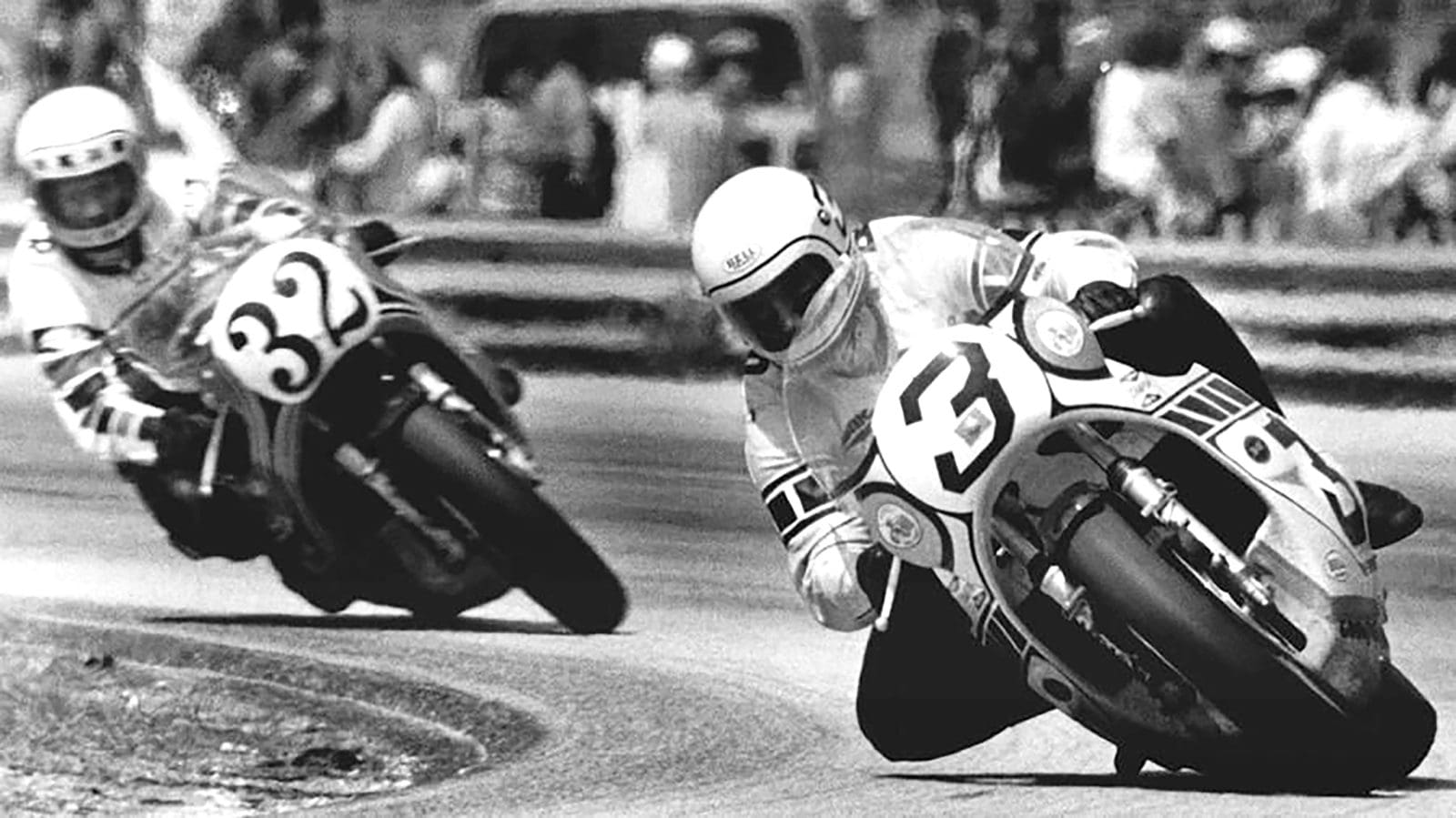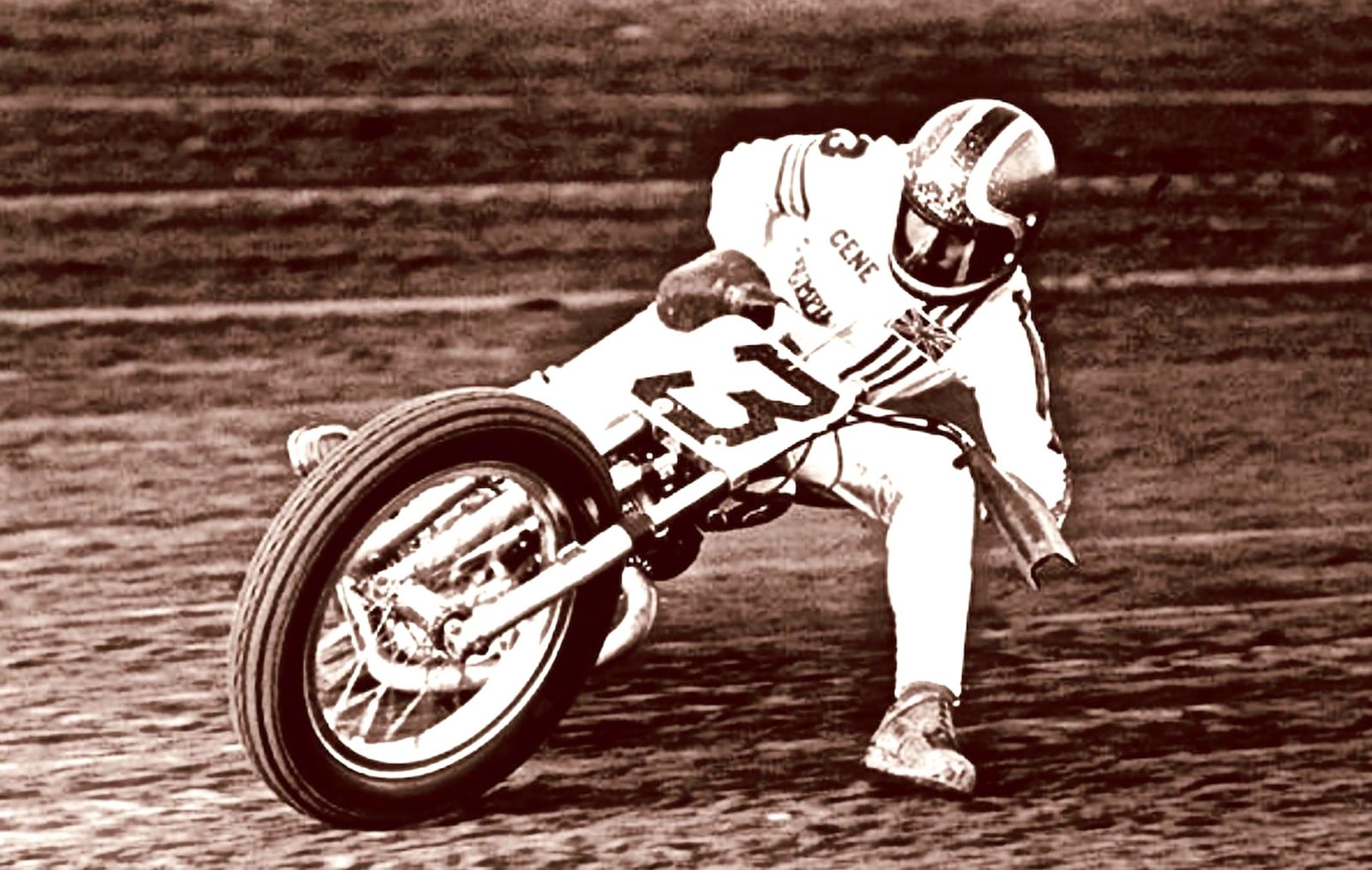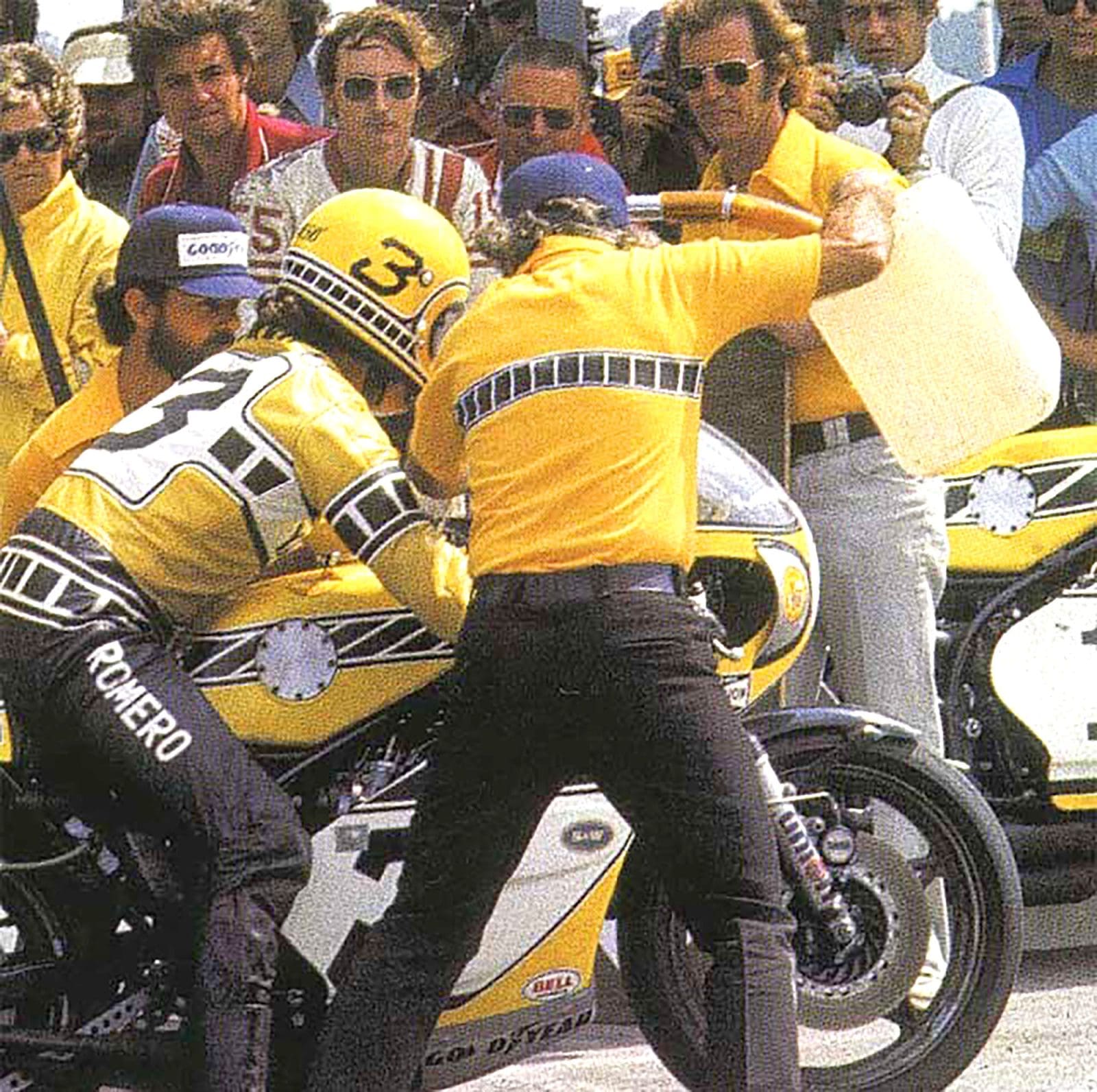Blessed with movie-star looks, toughness and miles of talent, American Gene Romero was one of the most colourful and respected riders of his era. The dirt-tracker turned road racer had a very early introduction to competition. Born in 1947, Romero was just 10 years old when he first mixed it in a quarter-midget Speedway car powered by a Continental Read Seal side-valve engine that his dad Gene Snr had set up. Running at the front, Gene started racing go-karts with the same success.

He turned to two-wheel racing first on a pushbike, and eventually to a Triumph Tiger Cub, which he paddock bashed for two weeks before racing it, lying about his age to gain entry. He was hooked so Romero’s dad began investing in his burgeoning career that began in earnest in scramble events at Los Angeles’ Ascot Park. By 1963 he was earmarked as one of the most promising runners in the Novice dirt-track class. He topped the division in 1964 and 1965 on a Harley before switching to Triumph as he moved into the Expert class.
Romero broke through for his first AMA National win at the TT event in Lincoln, Nebraska, in 1968, the year Gary Nixon won his second consecutive AMA Number One plate. Romero failed to win a race in 1969, but crucially racked up an incredible number of podiums to claim second in the final standings behind new Number One Mert Lawwill (H-D).
The Oscar-nominated documentary On Any Sunday shadowed Lawwill in his 1970 title defence riddled with heart-braking DNFs. Romero emerged as a suitor to Mert’s plate, and was introduced to movie audiences via an on-board mic whilst bucking around a half-mile track during practice… “I don’t wanna hurt anybody, but I gotta get third no matter what,” said Romero, quavering and puffing as he spoke, sideways at 160km/h. “Boy, I gotta get third or come visit me in the hospital… I dig carnations, man!”

Romero dominated the end-of-season Sacramento Mile to claim the AMA Number One plate, Ony Any Sunday capturing the moment the ecstatic new champion busted the circular ‘number-one’ finger wave in slow-mo as the champagne flowed.
Despite his jubilation, Romero’s remained winless as a road racer. He had finished second behind Dick Mann in the 1970 and 1971 Daytona 200s, followed by two third placings respectively in the 1972 Atlanta 125-miler and Loudon 100-miler, and runner-up behind Cal Rayborn (H-D) at Laguna Seca.
By 1973 Kenny Roberts (Yamaha) and Gary Scott (H-D) were the young lions fighting over the AMA Grand National Championship. Romero’s best years seemed behind him. In 1974, after almost a decade with Triumph, Romero was hired by Yamaha USA to race its ground-breaking TZ750A road racer alongside Roberts and Don Castro.

To get a measure of how good Romero was, it’s worth noting Gregg Hansford’s two encounters with him in 1974. Romero’s factory TZ750 had the benefit of Kel Carruthers’ fettling and better rubber, but Hansford admitted he was simply outridden by him at Laguna Seca and Ontario. Romero carded a 1-2 finish in the two 125-mile legs at Ontario to claim overall victory, his first in an AMA road race, beating Roberts, Barry Sheene and Hansford.
After missing out at Daytona the year before, knee-dragging Roberts was on fire during qualifying in 1975. He ran the ‘impossible’ 111mph pole lap and was short odds to take his much-coveted maiden 200 win. He hit the lead after four laps and was motoring away until his first pit stop on lap 18 when his counter-shaft sprocket failed (originally reported as clutch failure). When a dejected Roberts was asked live on TV who was going to win the race, he replied, “some slow-poke”.
Romero had started from the front row and was circulating in fifth. About half-race distance his Yamaha nipped up. He counted to three and let the clutch out and it re-started, his left hand hovering over the lever for the remainder of the race. He dealt with defending winner Giacomo Agostini and Steve Baker, and after the final stop was chasing down leader Steve McLaughlin.
“I came up on him, I’m sure he’d been getting signs, plus 10, plus six, plus two, and he was feeling the pressure,” Romero said later. McLaughlin binned it heading on to the banking with 20 laps to go. Back in the pits, Carruthers was asked by TV commentators what Romero needed to do. “Well, if he doesn’t get stupid and fall down, he’ll win it.” Romero joked later, “That’s my guy.”

Romero took a comfortable win from Baker and 19-year-old Johnny Ceccotto. Several days later, he visited good friend Sheene, who was recovering in hospital from multiple injuries sustained in his horrifying 275km/h practice get-off. Sheene was delighted that Gene won, especially since his arch-rival Roberts DNFed. “Bummer,” ‘slow-poke’ Gene noted dryly. Romero lit up a dart for Baz, and proudly boasted that he passed Ago twice. “Did you slap him on the back as you went past?” Sheene joked.
In 1976 Romero turned out on an Evel Knievel-sponsored Yamaha 750, and Don Vesco machines after that. In the 1979 Transatlantic Series, Gene won both races at Oulton Park to help Team USA defeat Great Britain. He retired from racing in 1981 then raced Super Vee and Midget cars for several years. He was team manager of American Honda’s all-conquering flat-track team from 1984-87, overseeing four AMA championships with Ricky Graham and Bubba Shobert. Honda’s pull out adversely affected flat-tracking. In the 1990s Romero promoted Gene Romero’s West Coast Flat-Track series in a bid to keep the struggling discipline alive.
A champion dirt-tracker, underrated road racer, successful factory team manager and race promoter, Gene Romero was inducted into the AMA Motorcycle Hall of Fame in 1998 with 12 AMA National wins.
He sadly passed away in 2019 aged 71.
WORDS: DARRYL FLACK PHOTOS: AMCN ARCHIVES











